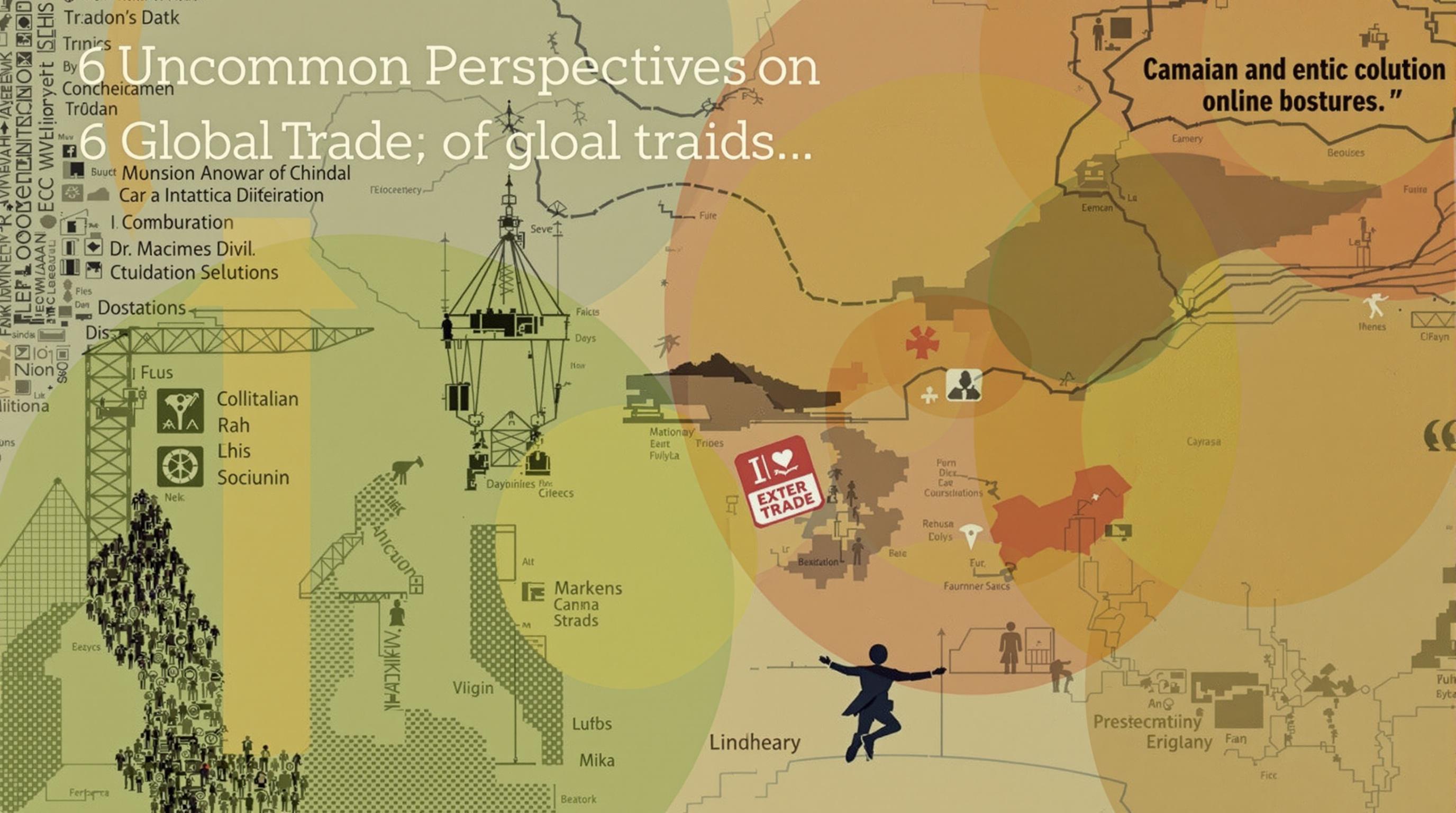Related Articles
- When Ancient Trade Routes Resurface: Unexpected Lessons for Modern Commerce and Global Economic Resilience
- When Artifacts Become Currencies: The Intriguing Trade Between Antiquities and Emerging Markets
- Beyond Borders: Unconventional Partnerships Transforming Trade Strategies in the Age of Globalization
- The Rise of Shadow Economies: How Informal Trade Networks are Disrupting Global Market Structures
- Cryptocurrency and Society: Understanding the Hidden Costs of Digital Assets on Community Well-Being
- The Surprising Role of Cultural Narratives in Shaping Investment Choices and Financial Preferences
8 Surprising Cultural Influences on Global Trade: 8 Unique Insights Into How Culture Shapes Market Evolution Today
8 Surprising Cultural Influences on Global Trade: 8 Unique Insights Into How Culture Shapes Market Evolution Today
8 Surprising Cultural Influences on Global Trade: 8 Unique Insights Into How Culture Shapes Market Evolution Today
1. The Role of Language in Trade
Language is not just a means of communication; it plays a crucial role in global trade. The nuances in languages can lead to different interpretations of business practices and consumer expectations. For instance, the concept of "saving face" in many Asian cultures can affect negotiations and agreements (Thompson, 2020).
Cultural linguistics also dictates how marketing messages are received. Brands that invest in local language translations and culturally appropriate advertising often see increased market penetration. Understanding phrases and idioms can create a sense of trust and familiarity, which is essential in a global market.
Global companies must also be aware of dialects and regional variations within a country. For example, a campaign that works well in one part of Brazil might not resonate in another due to cultural and linguistic differences. Thus, tailoring communication is key to success in diverse markets.
2. The Influence of Religion on Consumer Behavior
Religion deeply influences consumer behavior, with many people making purchasing decisions guided by their beliefs. For instance, Islamic finance principles have led to a rise in market offerings that comply with Sharia law, including halal products and interest-free banking (Khan, 2021).
In predominantly Christian regions, holidays like Christmas and Easter significantly boost retail sales, affecting inventory and marketing strategies. Brands that align their product offerings with religious calendars frequently enjoy increased sales during specific periods.
Moreover, with the rise of spirituality and wellness movements, companies have capitalized on trends that cater to consumers seeking ethical and eco-friendly products. This shift reflects how religion and belief systems can redefine market priorities and guide trade evolution.
3. Traditional Practices and Their Market Relevance
Traditional practices continue to play a substantial role in market dynamics across the globe. Indigenous and local craftsmanship, for example, is gaining attention, with consumers increasingly valuing authentic cultural heritage in the products they consume. This demand drives a market that promotes fair trade and artisanal goods.
In countries like Japan, traditional tea ceremonies have evolved into a profitable market, where globalization intersects with cultural preservation. These practices have led to niche markets that educate consumers while providing authentic experiences (Sato, 2019).
Brands that incorporate traditional elements into their offerings have been able to differentiate themselves in crowded markets. By connecting contemporary products with cultural heritage, businesses not only preserve traditions but also create unique selling propositions.
4. Cultural Festivals as Economic Drivers
Cultural festivals and heritage celebrations significantly boost local economies, creating opportunities for global trade. Events like Oktoberfest in Germany or Diwali in India attract tourists and promote local products, enhancing international exposure (Cohen, 2021).
These festivals provide a platform for local artisans and businesses to showcase their crafts and culinary delights to a global audience. As visitors seek authentic experiences, there is an increased demand for products that reflect the culture and traditions of the host country.
Festivals also foster community spirit and collaboration among local businesses, encouraging cross-promotions and partnerships that strengthen economic ties. The ripple effect of cultural events can spur trade not just in tourist-centric items but also in a range of goods and services.
5. Social Media and Cultural Exchange
Social media serves as a powerful tool for cultural exchange, influencing global trade patterns. The reach of platforms such as Instagram and TikTok allows trends to spread rapidly beyond borders, making previously obscure products viral sensations overnight (Martinez, 2022).
This interconnectedness can lead to a shift in consumer preferences and behaviors, with brands emerging from unexpected regions. For instance, viral challenges and hashtags have propelled niche markets such as K-beauty products or African fashion into mainstream commerce.
Moreover, social media provides a voice for marginalized cultures, enabling them to introduce unique products to a global audience. In this way, digital platforms not only enhance visibility but also facilitate cross-cultural interactions that influence purchasing decisions.
6. Cultural Attitudes Toward Sustainability
Cultural perspectives on sustainability significantly impact market evolution. In regions where environmental consciousness is integrated into cultural identity, sustainability initiatives drive consumer behavior. For example, Scandinavian countries prioritize eco-friendly products, leading to greater market demand for sustainable brands (Nilsson, 2021).
As awareness of global issues like climate change increases, more consumers are favoring businesses that prioritize ethical practices and sustainability. This shift compels companies to adapt their strategies, often leading to innovative practices in production and logistics.
Culturally driven sustainability fosters a market where businesses that align with consumers' values can thrive. Consequently, cultural attitudes toward the environment inform trade practices and consumer spending across the globe.
7. The Impact of Local Cuisine on Food Trade
Food is a universal language, and local cuisines often inspire global trading trends. The rise of international food markets highlighting local ingredients and traditional recipes has created opportunities for gourmet-style products and culinary tourism (O'Reilly, 2021).
Food trade has also expanded with globalization, leading to an unprecedented interest in exotic cuisines. This phenomenon allows unique food items to traverse borders, with consumers eager for cultural culinary experiences from different parts of the world.
As societies become increasingly health-conscious, there has been a growing trend toward plant-based diets and organic foods, driven by cultural changes in dietary preferences. This evolution has resulted in significant market opportunities for businesses that align with these dietary trends.
8. Understanding Consumer Psychology Through Culture
Cultural factors heavily influence consumer psychology, affecting how customers perceive brands and make purchase decisions. Understanding local customs and expectations can lead to more effective marketing strategies. For instance, the concept of collectivism prevalent in many Asian cultures can shape buyer behavior toward group-oriented purchases (Lee, 2020).
Additionally, what is considered 'luxury' can vary significantly across cultures. While Western markets may prioritize status and brand recognition, other cultures may value craftsmanship, heritage, or functionality as indicators of quality.
Marketers who successfully navigate these cultural complexities can drive growth by creating campaigns that resonate on a deeper level. Instead of a one-size-fits-all approach, tailored strategies rooted in cultural insights can lead to more profound connections with consumers worldwide.
- Cohen, R. (2021). *Cultural Festivals and the Economy*. Global Trade Review. - Khan, A. (2021). *Islamic Finance: Growth and Challenges*. Muslim Economic Studies. - Lee, K. (2020). *Consumer Psychology in Global Markets*. Journal of International Marketing. - Martinez, J. (2022). *Social Media's Role in Cultural Exchange*. Digital Marketing Insights. - Nilsson, S. (2021). *Sustainability in Scandinavian Markets*. Environmental Economics Review. - O'Reilly, T. (2021). *Gourmet Markets: Food as Culture*. Culinary Trade Journal. - Sato, Y. (2019). *The Art of Traditional Japanese Tea Ceremony*. Cultural Heritage Studies. - Thompson, L. (2020). *Cultural Communication in Business*. International Journal of Business Communication.




